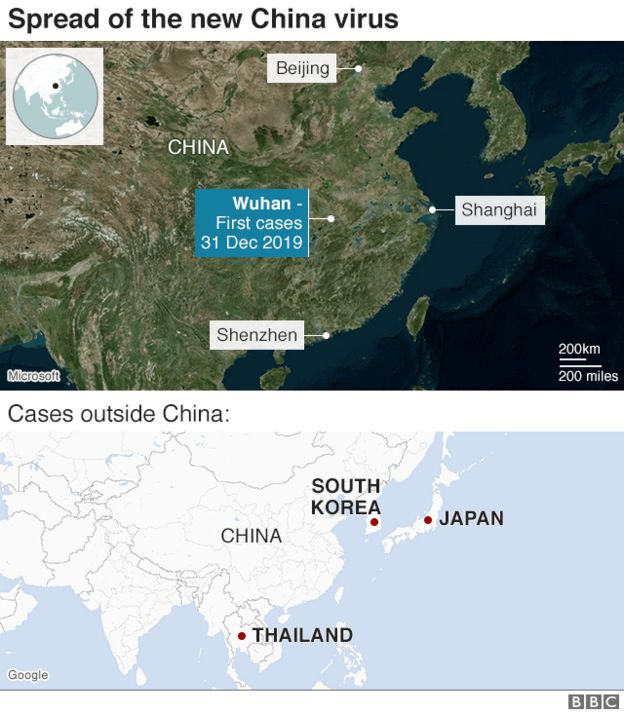 GETTY IMAGES
GETTY IMAGES
A fourth person in China has died from a new virus that has spread rapidly across the country, as authorities confirmed that it can be passed from person-to-person.
A 89-year-old man was the latest victim of the new strain of coronavirus, which causes a type of pneumonia.
He was living in Wuhan, the city at the centre of the outbreak.
More than 200 cases have now been reported across major cities in China including Beijing and Shanghai.
China's National Health Commission on Monday confirmed that two cases of infection in China's Guangdong province were due to human-to-human transmission.
In a separate statement, the Wuhan Municipal Health Commission said at least 15 medical workers in Wuhan have also been infected with the virus, with one of them in critical condition.
All of them are being kept in isolation while being treated for the illness.
The disease was first identified in Wuhan, a central Chinese city of 11 million people, late last year.
There are concerns that the virus could spread further when hundreds of millions of people travel within China for Chinese New Year later this week.
A handful of cases have also been identified abroad: two in Thailand, one in Japan and another in South Korea. These are people who had travelled from Wuhan recently.


Airports in Singapore, Hong Kong and the Japanese capital Tokyo have been screening air passengers from Wuhan, and US authorities last week announced similar measures at three major airports in San Francisco, Los Angeles and New York.
Australian authorities have also announced that they will begin screening passengers coming from Wuhan to Sydney.
China is the largest source of tourists to Australia, with more than 1 million people arriving last year.

What we know about the virus
- 2019-nCoV, as it's been labelled, is understood to be a new strain of coronavirus that has not previously been identified in humans
- Coronaviruses are a broad family of viruses, but only six (the new one would make it seven) are known to infect people
- Scientists believe an animal source is "the most likely primary source" but that some human-to-human transmission has occurred
- Signs of infection include respiratory symptoms, fever, cough, shortness of breath and breathing difficulties
- People are being advised to avoid "unprotected" contact with live animals, thoroughly cook meat and eggs, and avoid close contact with anyone with cold or flu-like symptoms
Source: World Health Organization

The outbreak has revived memories of the Sars virus - also a coronavirus - that killed 774 people in the early 2000s across dozens of countries, mostly in Asia. Analysis of the genetic code of the new virus shows it is more closely related to Sars than any other human coronavirus.
Experts in the UK told the BBC the number of people infected could still be far greater than official figures suggest, with estimates closer to 1,700.

















No comments:
Post a Comment